Healthcare Simulation Books
Healthcare Simulation Books are a critical component of learning how to develop, expand, and utilize medical simulation methodologies and technologies in professional healthcare institutions to improve learning and patient safety performance outcomes. Everything from audiovisual system design, to manikin hardware, debriefing, patient simulators, nursing simulation, virtual reality, research books, surgical simulation, administrative manuals, Sim Tech guides and more!
As educational degree pathways are extremely rare and healthcare simulation conferences take place only annually, healthcare professionals and institutions seeking to develop or expand their simulation expertise should invest heavily into the latest nursing simulation books, surgical simulation books, moulage books and more!
As Amazon prices change frequently we do not list them here but most books are under $100. Have another book to share? Email us and we will add it to the list. As an affiliate of Amazon and Commission Junction LLC, HealthySimulation.com does receive a small commission for each item purchased after clicking any of the links listed below. Click the book titles to buy them off Amazon today!
Sponsored Content:
Medical Simulation Latest Books
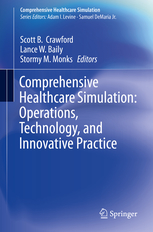 Comprehensive Healthcare Simulation: Operations, Technology, and Innovative Practice (Editors: Crawford, Scott B., Baily, Lance W., Monks, Stormy M.):
Comprehensive Healthcare Simulation: Operations, Technology, and Innovative Practice (Editors: Crawford, Scott B., Baily, Lance W., Monks, Stormy M.):
This practical guide provides a focus on the implementation of healthcare simulation operations, as well as the type of professional staff required for developing effective programs in this field. Though there is no single avenue in which a person pursues the career of a healthcare simulation technology specialist (HSTS), this book outlines the extensive knowledge and variety of skills one must cultivate to be effective in this role. This book begins with an introduction to healthcare simulation, including personnel, curriculum, and physical space. Subsequent chapters address eight knowledge/skill domains core to the essential aspects of an HSTS.
Best practices and innovations are provided, and the benefits of developing a collaborative relationship with industry stakeholders are discussed. Expertly written text throughout the book is supplemented with dozens of high-quality color illustrations, photographs, and tables.
Written and edited by leaders in the field (including SimGHOSTS and HealthySimulation.com Founder Lance Baily), Comprehensive Healthcare Simulation: Operations, Technology, and Innovative Practice is optimized for a variety of learners, including healthcare educators, simulation directors, as well as those looking to pursue a career in simulation operations as healthcare simulation technology specialists.
Clinical Simulation Books
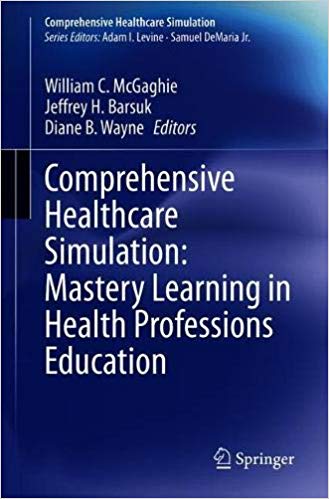 Comprehensive Healthcare Simulation: Mastery Learning in Health Professions Education: This book presents the parameters of Mastery Learning (ML), an especially stringent variety of competency-based education that guides students to acquire essential knowledge and skill, measured rigorously against a minimum passing standard (MPS). As both a scholarly resource and a teaching tool, this is a “how to” book that serves as a resource for a wide variety of health professions educators. A seminal source of information and practical advice about ML, this book divided into five parts: Clinical Education in the Health Professions, The Mastery Learning Model, Mastery Learning in Action, Transfer of Training from Mastery Learning and The Road Ahead. Complete with high-quality images and tables, chapters take an in-depth look into ML principles and practices across the health professions. Specific educational content instructs readers on how to build and present ML curricula, evaluate short and long-run results, conduct learner debriefing and give powerful feedback, set learner achievement standards, and prepare faculty for new educational roles. An invaluable addition to the Comprehensive Healthcare Simulation Series, Mastery Learning in Health Professions Education is written and edited by leaders in the field for practicing clinicians in a variety of health professions. Comprehensive Healthcare Simulation: Mastery Learning in Health Professions Education: This book presents the parameters of Mastery Learning (ML), an especially stringent variety of competency-based education that guides students to acquire essential knowledge and skill, measured rigorously against a minimum passing standard (MPS). As both a scholarly resource and a teaching tool, this is a “how to” book that serves as a resource for a wide variety of health professions educators. A seminal source of information and practical advice about ML, this book divided into five parts: Clinical Education in the Health Professions, The Mastery Learning Model, Mastery Learning in Action, Transfer of Training from Mastery Learning and The Road Ahead. Complete with high-quality images and tables, chapters take an in-depth look into ML principles and practices across the health professions. Specific educational content instructs readers on how to build and present ML curricula, evaluate short and long-run results, conduct learner debriefing and give powerful feedback, set learner achievement standards, and prepare faculty for new educational roles. An invaluable addition to the Comprehensive Healthcare Simulation Series, Mastery Learning in Health Professions Education is written and edited by leaders in the field for practicing clinicians in a variety of health professions. |
 The Comprehensive Textbook of Healthcare Simulation is a cohesive, single-source reference on all aspects of simulation in medical education and evaluation. It covers the use of simulation in training in each specialty and is aimed at healthcare educators and administrators who are developing their own simulation centers or programs and professional organizations looking to incorporate the technology into their credentialing process. For those already involved in simulation, the book will serve as a state-of-the-art reference that helps them increase their knowledge base, expand their simulation program’s capabilities, and attract new, additional target learners. The Comprehensive Textbook of Healthcare Simulation is a cohesive, single-source reference on all aspects of simulation in medical education and evaluation. It covers the use of simulation in training in each specialty and is aimed at healthcare educators and administrators who are developing their own simulation centers or programs and professional organizations looking to incorporate the technology into their credentialing process. For those already involved in simulation, the book will serve as a state-of-the-art reference that helps them increase their knowledge base, expand their simulation program’s capabilities, and attract new, additional target learners. |
 |
 Defining Excellence in Simulation Programs (2nd Edition) is an official publication of the Society for Simulation in Healthcare (SSH), created to support the Society’s mission to encourage excellence in healthcare education, practice and research through the use of simulation. With nearly 140 expert clinicians and educators contributing, this authoritative guide offers clear-cut definitions, recommendations and best practices for all types of simulation training programs. For those looking to create or manage successful, cost-effective, researched-based simulation programs. Defining Excellence in Simulation Programs (2nd Edition) is an official publication of the Society for Simulation in Healthcare (SSH), created to support the Society’s mission to encourage excellence in healthcare education, practice and research through the use of simulation. With nearly 140 expert clinicians and educators contributing, this authoritative guide offers clear-cut definitions, recommendations and best practices for all types of simulation training programs. For those looking to create or manage successful, cost-effective, researched-based simulation programs. |
 |
 Healthcare Simulation Education: Evidence, Theory and Practice Healthcare Simulation Education: Evidence, Theory and Practice |
 Manual of Simulation in Healthcare Manual of Simulation in Healthcare |
 |
 Healthcare Simulation Program Builder Healthcare Simulation Program Builder |
 Developing Successful Health Care Education Simulation Center: Consortium Model meets a growing need for guidelines on planning, organizing, and implementing a health care education simulation center, using the collaborative and cost effective consortium model. The book takes the reader step-by-step through the process of building a coalition of key stakeholders, gathering and analyzing data, assigning leadership roles within the consortium, developing a strategic plan, and implementing and sustaining it. Case studies in each chapter provide real-life insight from a successful existing consortium by examining how it operates and highlighting successes, mistakes, and lessons learned. Developing Successful Health Care Education Simulation Center: Consortium Model meets a growing need for guidelines on planning, organizing, and implementing a health care education simulation center, using the collaborative and cost effective consortium model. The book takes the reader step-by-step through the process of building a coalition of key stakeholders, gathering and analyzing data, assigning leadership roles within the consortium, developing a strategic plan, and implementing and sustaining it. Case studies in each chapter provide real-life insight from a successful existing consortium by examining how it operates and highlighting successes, mistakes, and lessons learned. |
 Clinical Simulation: Operations, Engineering and Management is a practical guide and reference to the latest technology, operations and opportunities presented by clinical simulation. It shows how to develop and make efficient use of resources, and provides hands-on information to those tasked with setting up and delivering simulation facilities for medical, clinical and related purposes, and the development and delivery of simulation-based education programs Clinical Simulation: Operations, Engineering and Management is a practical guide and reference to the latest technology, operations and opportunities presented by clinical simulation. It shows how to develop and make efficient use of resources, and provides hands-on information to those tasked with setting up and delivering simulation facilities for medical, clinical and related purposes, and the development and delivery of simulation-based education programs |
 |
 |
 |
 |
 |
 I Had No Idea: Clinical Simulations for Teacher Development I Had No Idea: Clinical Simulations for Teacher Development |
 Clinical Simulations in Nursing Education: Advanced Concepts, Trends, and Opportunities Clinical Simulations in Nursing Education: Advanced Concepts, Trends, and Opportunities |
 Clinical Simulations for Nursing Education: Instructor Volume helps your students develop and practice the critical assessment, clinical reasoning, and nursing care skills they need to deliver safe and effective patient care in a controlled, risk-free environment. 51 structured simulation scenarios—34 in print and 17 on DavisPlus, the F.A. Davis password-protected site—cover the entire nursing curriculum. Each simulation scenario focuses on a defined clinical domain, critical knowledge and skills, levels of competency, evidenced-based practice guidelines, National Patient Safety Goals, and research-based design characteristics. Clinical Simulations for Nursing Education: Instructor Volume helps your students develop and practice the critical assessment, clinical reasoning, and nursing care skills they need to deliver safe and effective patient care in a controlled, risk-free environment. 51 structured simulation scenarios—34 in print and 17 on DavisPlus, the F.A. Davis password-protected site—cover the entire nursing curriculum. Each simulation scenario focuses on a defined clinical domain, critical knowledge and skills, levels of competency, evidenced-based practice guidelines, National Patient Safety Goals, and research-based design characteristics. |
 Clinical Simulations for Nursing Education: Participant Volume Clinical Simulations for Nursing Education: Participant Volume |
 Clinical Simulations for Nursing Education: Learner Volume Clinical Simulations for Nursing Education: Learner Volume |
 Clinical Simulations for Nursing Education: Facilitator Volume Clinical Simulations for Nursing Education: Facilitator Volume |
 Simulation Learning System for Nursing Fundamentals (Access Card) integrates simulation technology into your fundamentals nursing course with realistic patient care scenarios and supportive learning resources that correspond to your nursing fundamentals text. The SLS offers: targeted reading assignments and critical thinking exercises to prepare you for the simulation experience; access to patient data with an SBAR shift report and fully-functional electronic health record (EHR); post-simulation exercises like charting and concept mapping; and review resources such as animations and text references. Using SLS helps bridge the gap between lecture and clinicals to prepare you for the real world of nursing. Simulation Learning System for Nursing Fundamentals (Access Card) integrates simulation technology into your fundamentals nursing course with realistic patient care scenarios and supportive learning resources that correspond to your nursing fundamentals text. The SLS offers: targeted reading assignments and critical thinking exercises to prepare you for the simulation experience; access to patient data with an SBAR shift report and fully-functional electronic health record (EHR); post-simulation exercises like charting and concept mapping; and review resources such as animations and text references. Using SLS helps bridge the gap between lecture and clinicals to prepare you for the real world of nursing. |
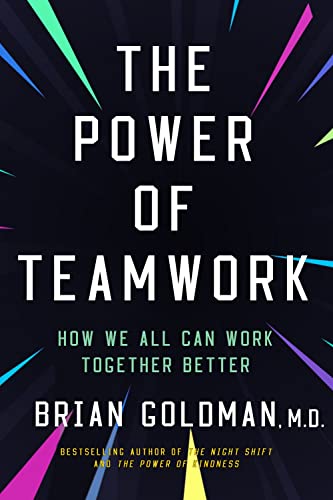 The Power of Teamwork: How We Can All Work Better Together: In the high-pressure and complex setting of healthcare, a new approach to teamwork is leading to healthier patients, happier staff, and more efficient operations. Healthcare’s embrace of a new teamwork model has been noticed by people outside the medical world, so doctors are going outside the walls of the hospital to teach manufacturers, business owners, franchisees, customer service representatives, and even those in sports and entertainment to do better by shifting the culture from “me” to “we.” The Power of Teamwork: How We Can All Work Better Together: In the high-pressure and complex setting of healthcare, a new approach to teamwork is leading to healthier patients, happier staff, and more efficient operations. Healthcare’s embrace of a new teamwork model has been noticed by people outside the medical world, so doctors are going outside the walls of the hospital to teach manufacturers, business owners, franchisees, customer service representatives, and even those in sports and entertainment to do better by shifting the culture from “me” to “we.”
Drawing on groundbreaking research and examples from around the world, The Power of Teamwork shows how a team approach to medicine can improve customer service and help women break the glass ceiling. It can solidify the provision of social services to troubled youth, and boost the efficiency and safety of the military and critical industrial complexes like nuclear power plants. It can even make professional sports teams perform better. |
 Healthcare Simulation: A Guide for Operations Specialists Healthcare Simulation: A Guide for Operations Specialists |
 Medical Moulage: How to Make Your Simulations Come Alive Medical Moulage: How to Make Your Simulations Come Alive |
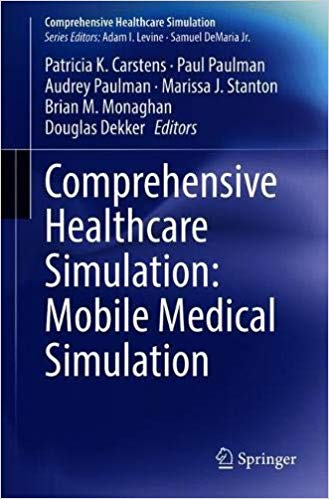 Comprehensive Healthcare Simulation: Mobile Medical Simulation: This book provides information to support the new and growing field of medical simulation training using mobile simulation vehicles. These mobile training programs bring vehicles equipped with spaces to simulate patient care areas, task trainers, and mannequins directly to the medical provider. This concise reference introduces programs that bring necessary training to providers and offers step by step guidance on how to establish and run a mobile medical simulation program. Divided into two main sections, the first analyzes the methods and techniques to implement a program, including marketing, finances, and program evaluation. The second section then delves into greater detail regarding the actual teaching and training, including chapters on educational methodology, scenario design, and how to prepare for a simulation session. Part of the groundbreaking Comprehensive Healthcare Simulation Series, Mobile Medical Simulation is an ideal guide for administrators and managers who design and implement mobile simulation training programs, as well as educators and trainers working in the field. Comprehensive Healthcare Simulation: Mobile Medical Simulation: This book provides information to support the new and growing field of medical simulation training using mobile simulation vehicles. These mobile training programs bring vehicles equipped with spaces to simulate patient care areas, task trainers, and mannequins directly to the medical provider. This concise reference introduces programs that bring necessary training to providers and offers step by step guidance on how to establish and run a mobile medical simulation program. Divided into two main sections, the first analyzes the methods and techniques to implement a program, including marketing, finances, and program evaluation. The second section then delves into greater detail regarding the actual teaching and training, including chapters on educational methodology, scenario design, and how to prepare for a simulation session. Part of the groundbreaking Comprehensive Healthcare Simulation Series, Mobile Medical Simulation is an ideal guide for administrators and managers who design and implement mobile simulation training programs, as well as educators and trainers working in the field. |
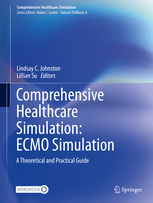 Comprehensive Healthcare Simulation: ECMO Simulation: This book focuses on the technical, cognitive, and behavioral skills needed to implement an extracorporeal membrane oxygenation (ECMO) simulation program. It describes these programs on the individual, team, and hospital system level, and includes the history of ECMO simulation, its evolution to its current state, and future directions of technology and science related to ECMO simulation. Divided into six sections, chapters describe both the theoretical as well as the practical aspects of ECMO simulation, including a pictorial guide to setting up an ECMO simulation circuit and how to recreate ECMO emergencies. It is a pragmatic guide that emphasizes the necessary practical items and discussions necessary to plan, set-up, orchestrate, and debrief ECMO simulations for different types of learners in different. |
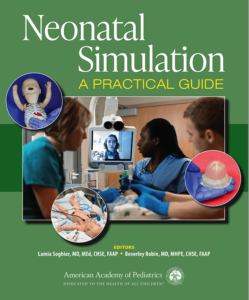 Neonatal Simulation: A Practical Guide: Developed by the leading experts in neonatal simulation, this innovative new resource delivers neonatology health care providers and educators essential guidance on designing, developing, and implementing simulation-based neonatal education programs. The early chapters cover learning theory, fundamentals of scenario design, and simulation and the Neonatal Resuscitation Program. The later chapters cover specific applications of simulation in neonatology and debriefing techniques. The book walks the reader through scenario design, mannequins and task trainers, moulage, simulation techniques, virtual simulations, mannequin adaptations needed to conduct specific simulation procedures, debriefing methods, and more. Step-by-step images walk the reader through adapting mannequins to simulate procedures and how to replicate body fluids and conditions commonly encountered in newborns. Neonatal Simulation: A Practical Guide: Developed by the leading experts in neonatal simulation, this innovative new resource delivers neonatology health care providers and educators essential guidance on designing, developing, and implementing simulation-based neonatal education programs. The early chapters cover learning theory, fundamentals of scenario design, and simulation and the Neonatal Resuscitation Program. The later chapters cover specific applications of simulation in neonatology and debriefing techniques. The book walks the reader through scenario design, mannequins and task trainers, moulage, simulation techniques, virtual simulations, mannequin adaptations needed to conduct specific simulation procedures, debriefing methods, and more. Step-by-step images walk the reader through adapting mannequins to simulate procedures and how to replicate body fluids and conditions commonly encountered in newborns. |
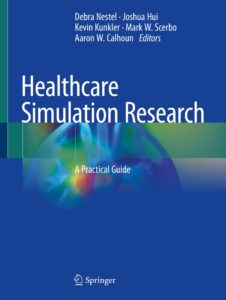 Healthcare Simulation Research: A Practical Guide provides readers with a detailed orientation to healthcare simulation research, aiming to provide descriptive and illustrative accounts of healthcare simulation research (HSR). Written by leaders in the field, chapter discussions draw on the experiences of the editors and their international network of research colleagues. This seven-section practical guide begins with an introduction to the field by relaying the key components of HSR. Sections two, three, four, and five then cover various topics relating to research literature, methods for data integration, and qualitative and quantitative approaches. Finally, the book closes with discussions of professional practices in HSR, as well as helpful tips and case studies. Healthcare Simulation Research: A Practical Guide is an indispensable reference for scholars, medical professionals and anyone interested in undertaking HSR. Healthcare Simulation Research: A Practical Guide provides readers with a detailed orientation to healthcare simulation research, aiming to provide descriptive and illustrative accounts of healthcare simulation research (HSR). Written by leaders in the field, chapter discussions draw on the experiences of the editors and their international network of research colleagues. This seven-section practical guide begins with an introduction to the field by relaying the key components of HSR. Sections two, three, four, and five then cover various topics relating to research literature, methods for data integration, and qualitative and quantitative approaches. Finally, the book closes with discussions of professional practices in HSR, as well as helpful tips and case studies. Healthcare Simulation Research: A Practical Guide is an indispensable reference for scholars, medical professionals and anyone interested in undertaking HSR. |
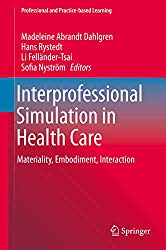 Interprofessional Simulation in Health Care: Materiality, Embodiment, Interaction describes and discusses a practice-oriented approach to understanding and researching interprofessional simulation-based education and simulation. It provides empirical findings from research on this topic and is informed by practice-oriented perspectives. It identifies critical features of the simulation practice and discusses how these can be used in reforming simulation pedagogy. The book is divided into three sections: Section 1 sets the scene for understanding the practices of interprofessional simulation-based education and simulation. It provides a theoretical and methodological framework for the conceptualization of practices and for the empirical studies on which the book is based. Section 2 revisits the dimensions of the simulation process/exercise, i.e. the briefing, simulation, and debriefing, and provides empirical analyses of how the practice of simulation unfolds. Based on these analyses, section 3 identifies and discusses how pedagogies for simulation can be reformed to meet the demands of future healthcare and research. Interprofessional Simulation in Health Care: Materiality, Embodiment, Interaction describes and discusses a practice-oriented approach to understanding and researching interprofessional simulation-based education and simulation. It provides empirical findings from research on this topic and is informed by practice-oriented perspectives. It identifies critical features of the simulation practice and discusses how these can be used in reforming simulation pedagogy. The book is divided into three sections: Section 1 sets the scene for understanding the practices of interprofessional simulation-based education and simulation. It provides a theoretical and methodological framework for the conceptualization of practices and for the empirical studies on which the book is based. Section 2 revisits the dimensions of the simulation process/exercise, i.e. the briefing, simulation, and debriefing, and provides empirical analyses of how the practice of simulation unfolds. Based on these analyses, section 3 identifies and discusses how pedagogies for simulation can be reformed to meet the demands of future healthcare and research. |
 Comprehensive Healthcare Simulation: Pediatrics Comprehensive Healthcare Simulation: Pediatrics |
 Textbook of Simulation: Skills and Team Training Textbook of Simulation: Skills and Team Training |
 |
 |

is the first “how-to” manual for health educators on the instructional use of three-dimensional, computer-generated virtual environments that can be inhabited simultaneously by many participants; commonly called “multi-user virtual learning environments” or MUVE. Based on her experience supervising more than 400 learning activities in Second Life, Dr. Estelle Codier has written a step-by-step handbook for novice and experienced MUVE teachers alike. The book provides those new to virtual teaching with specific steps to assess their own instructional readiness, guidance for assessing student and class readiness, as well as detailed descriptions of problem prevention and solutions. The text is accompanied by lively case studies of both success and failure in virtual learning environments. Inspiring stories of student learning illustrate the power of MUVE to transform health care education.
 Applied Virtual Reality in Healthcare: Case Studies and Perspectives: Edited by Dr. Walter Greenleaf, LaVonne Roberts, and Robert Fine, this book is for healthcare professionals, academics, technologists, designers, research scientists, students, and anyone who wants to gain a deeper understanding of the benefits of VR applications in clinical settings. The editors showcase the latest, cutting-edge applications through a broad selection of companies and healthcare organizations across the globe shaping patient-centric digital healthcare. Applied Virtual Reality in Healthcare: Case Studies and Perspectives: Edited by Dr. Walter Greenleaf, LaVonne Roberts, and Robert Fine, this book is for healthcare professionals, academics, technologists, designers, research scientists, students, and anyone who wants to gain a deeper understanding of the benefits of VR applications in clinical settings. The editors showcase the latest, cutting-edge applications through a broad selection of companies and healthcare organizations across the globe shaping patient-centric digital healthcare.
Sixty-six contributing authors who use VR to improve clinical skill training and enhance patient outcomes offer this comprehensive exploration of the most current research, methodology, and best practices for health systems leveraging VR technology in several key health sectors. In addition to being an educational tool, this book may also influence policymakers to guide legislation that helps support its growth and address healthcare data privacy concerns. |
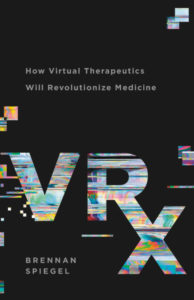
VRx How Virtual Therapeutics Will Revolutionize Medicine: Brennan Spiegel has spent years studying the medical power of the mind, and in VRx he reveals a revolutionary new kind of care: virtual medicine. It offers the possibility of treating illnesses without solely relying on intrusive surgeries or addictive opioids. Virtual medicine works by convincing your body that it’s somewhere, or something, it isn’t. It’s affordable, widely available, and has already proved effective against everything from burn injuries to stroke to PTSD. Spiegel shows how a simple VR headset lets a patient with schizophrenia confront the demon in his head, how dementia patients regain function in a life-size virtual town, and how vivid simulations of patients’ experiences are making doctors more empathic. VRx is a revelatory account of the connection between our bodies and ourselves. In an age of overmedication and depersonalized care, it offers no less than a new way to heal. |
 Game-Based Teaching and Simulation in Nursing and Health Care Game-Based Teaching and Simulation in Nursing and Health Care |
 Teaching Technologies in Nursing & the Health Professions: Beyond Simulation and Online Courses Teaching Technologies in Nursing & the Health Professions: Beyond Simulation and Online Courses |
 Dawn of the New Everything: A Journey Through Virtual Reality Dawn of the New Everything: A Journey Through Virtual Reality |
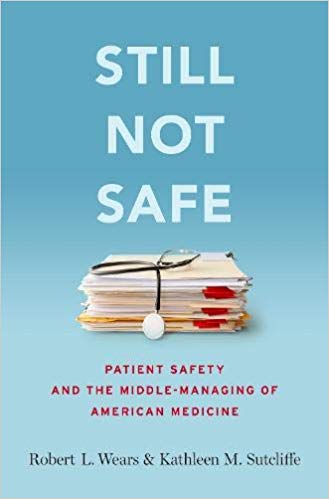 Still Not Safe: Patient Safety and the Middle-Managing of American Medicine: Still Not Safe is the story of the rise of the patient-safety movement -- and how an "epidemic" of medical errors was derived from a reality that didn't support such a characterization. Physician Robert Wears and organizational theorist Kathleen Sutcliffe trace the origins of patient safety to the emergence of market trends that challenged the place of doctors in the larger medical ecosystem: the rise in medical litigation and physicians' aversion to risk; institutional changes in the organization and control of healthcare; and a bureaucratic movement to "rationalize" medical practice -- to make a hospital run like a factory. If these social factors challenged the place of practitioners, then the patient-safety movement provided a means for readjustment. In spite of relatively constant rates of medical errors in the preceding decades, the "epidemic" was announced in 1999 with the publication of the Institute of Medicine report To Err Is Human; the reforms that followed came to be dominated by the very professions it set out to reform. Weaving together narratives from medicine, psychology, philosophy, and human performance, Still Not Safe offers a counterpoint to the presiding, doctor-centric narrative of contemporary American medicine. It is certain to raise difficult, important questions about the state of our healthcare system -- and provide an opening note for other challenging conversations. Still Not Safe: Patient Safety and the Middle-Managing of American Medicine: Still Not Safe is the story of the rise of the patient-safety movement -- and how an "epidemic" of medical errors was derived from a reality that didn't support such a characterization. Physician Robert Wears and organizational theorist Kathleen Sutcliffe trace the origins of patient safety to the emergence of market trends that challenged the place of doctors in the larger medical ecosystem: the rise in medical litigation and physicians' aversion to risk; institutional changes in the organization and control of healthcare; and a bureaucratic movement to "rationalize" medical practice -- to make a hospital run like a factory. If these social factors challenged the place of practitioners, then the patient-safety movement provided a means for readjustment. In spite of relatively constant rates of medical errors in the preceding decades, the "epidemic" was announced in 1999 with the publication of the Institute of Medicine report To Err Is Human; the reforms that followed came to be dominated by the very professions it set out to reform. Weaving together narratives from medicine, psychology, philosophy, and human performance, Still Not Safe offers a counterpoint to the presiding, doctor-centric narrative of contemporary American medicine. It is certain to raise difficult, important questions about the state of our healthcare system -- and provide an opening note for other challenging conversations. |
 |
 |
 |
 Beyond the Checklist: What Else Health Care Can Learn from Aviation Teamwork and Safety argues that lives could be saved and patient care enhanced by adapting the relevant lessons of aviation safety and teamwork. In response to a series of human-error caused crashes, the airline industry developed the system of job training and information sharing known as Crew Resource Management (CRM). Under the new industry-wide system of CRM, pilots, flight attendants, and ground crews now communicate and cooperate in ways that have greatly reduced the hazards of commercial air travel. The coauthors of this book sought out the aviation professionals who made this transformation possible. Beyond the Checklist gives us an inside look at CRM training and shows how airline staff interaction that once suffered from the same dysfunction that too often undermines real teamwork in health care today has dramatically improved. Drawing on the experience of doctors, nurses, medical educators, and administrators, this book demonstrates how CRM can be adapted, more widely and effectively, to health care delivery. Beyond the Checklist: What Else Health Care Can Learn from Aviation Teamwork and Safety argues that lives could be saved and patient care enhanced by adapting the relevant lessons of aviation safety and teamwork. In response to a series of human-error caused crashes, the airline industry developed the system of job training and information sharing known as Crew Resource Management (CRM). Under the new industry-wide system of CRM, pilots, flight attendants, and ground crews now communicate and cooperate in ways that have greatly reduced the hazards of commercial air travel. The coauthors of this book sought out the aviation professionals who made this transformation possible. Beyond the Checklist gives us an inside look at CRM training and shows how airline staff interaction that once suffered from the same dysfunction that too often undermines real teamwork in health care today has dramatically improved. Drawing on the experience of doctors, nurses, medical educators, and administrators, this book demonstrates how CRM can be adapted, more widely and effectively, to health care delivery. |
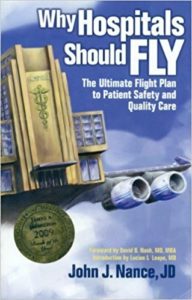 Why Hospitals Should Fly: The Ultimate Flight Plan to Patient Safety and Quality Care Why Hospitals Should Fly: The Ultimate Flight Plan to Patient Safety and Quality Care |
 |
 Black Box Thinking: Why Most People Never Learn from Their Mistakes--But Some Do Black Box Thinking: Why Most People Never Learn from Their Mistakes--But Some Do |
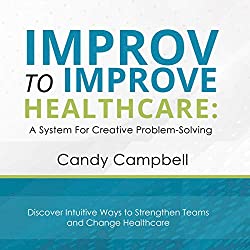
Improv to Improve Healthcare - A System for Creative Problem Solving: Health-care organizations cry out for a tool to decrease untoward events and bridge the communication gap between professional clinician teams and clients. Discover how to guide your team to creatively problem-solve, build emotional and social intelligence, increase workplace safety and employee retention, and guarantee client satisfaction with the results-don’t-lie Improv to Improve Healthcare system. |
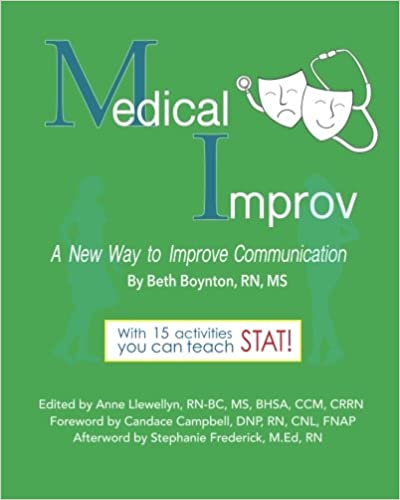
Medical Improv: A New Way to Improve Communication is a train-the-trainer resource designed to help educators teach the "soft" skills that healthcare professionals need to positively impact patient safety, patient experience, workforce health, and the efficient use of resources. Because these skills are not intellectual, they require a non-traditional approach that fosters new behaviors. Medical Improv is a fun and effective strategy. There are 3 parts to the book. Part I, explains what Medical Improv is and why we need it. Part II, focuses on how to facilitate successful Medical Improv sessions. Part III, covers step-by-step instructions for teaching 15 fundamental activities with chapters that focus on skills associated with emotional intelligence and communication, teamwork, and leadership. You do NOT need experience in improv or a background in theater to teach these fundamental activities. This is the first Medical Improv train-the-trainer book for nurses and other healthcare educators. Applied improvisers will find it helpful for teaching classes in the healthcare sector. The author's combined expertise in nursing, communication, organizational development, and improvisation provide a powerful opportunity for positive change! |
 Review Manual for the Certified Healthcare Simulation Educator (CHSE) Exam is the first practice manual to assist healthcare simulation educators in the United States and internationally in preparing for certification in this rapidly emerging field. The authors, noted experts in simulation and education, have carefully analyzed the CHSE blueprint to ascertain what material is most likely to be covered. They present this information in a user-friendly, pithy outline format. This review manual provides numerous features that help students to critically analyze test content, including end-of-chapter review questions, test-taking strategies, and a comprehensive practice test with answers and rationales. It features current evidence-based teaching practices and incorporates case studies to connect simulation situations to simulation education with healthcare students and includes information about advanced certification and recertification. Review Manual for the Certified Healthcare Simulation Educator (CHSE) Exam is the first practice manual to assist healthcare simulation educators in the United States and internationally in preparing for certification in this rapidly emerging field. The authors, noted experts in simulation and education, have carefully analyzed the CHSE blueprint to ascertain what material is most likely to be covered. They present this information in a user-friendly, pithy outline format. This review manual provides numerous features that help students to critically analyze test content, including end-of-chapter review questions, test-taking strategies, and a comprehensive practice test with answers and rationales. It features current evidence-based teaching practices and incorporates case studies to connect simulation situations to simulation education with healthcare students and includes information about advanced certification and recertification. |
 |
 Simulation in Healthcare Education: An Extensive History Simulation in Healthcare Education: An Extensive History |
Sponsored Content:
















